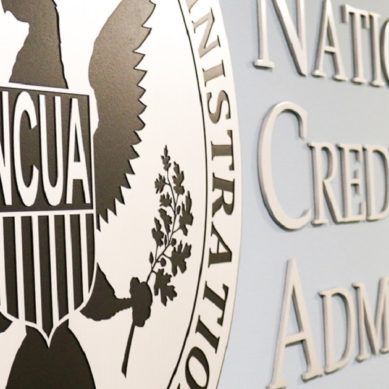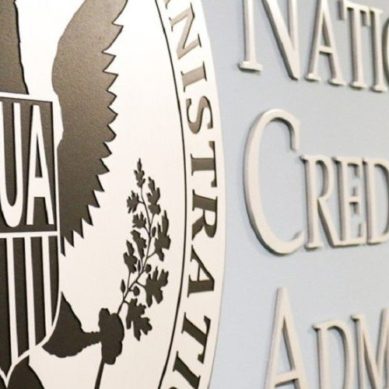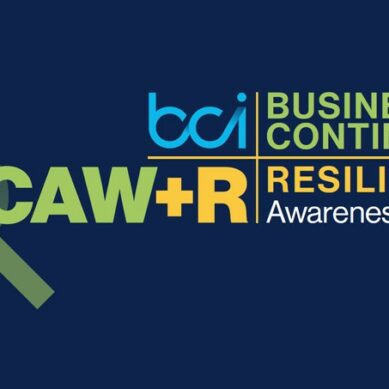Last week, we learned about the basics of interchange income. What it is, why it matters to credit unions, and the ways Congress has affected it in the last fifteen years. We left off with the Durbin Amendment of 2010, introduced by Senator Richard Durbin (D-IL), and the ways it affected debit cards.
Enter the Credit Card Competition Act of 2023
Fast forward thirteen years and Durbin is back at it again. In a piece of legislation sponsored by the Illinois Democrat and introduced June 2023, he has taken aim at credit card interchange.
In a summary Durbin posted introducing the bill, he specifically called out Visa and Mastercard’s “duopoly” as the two networks control 80% of the credit card network market. Between the two networks, merchants were charged $93 billion in credit card interchange in 2022. No small amount.
It’s due to these swipe fees, Durbin asserts, that merchants are forced to drive their prices up, passing those costs on to consumers.
As such, the act will seek to improve competition and make credit card interchange more in line with how debit cards now operate. The big thing to note here is if the act is signed into law, only the very largest financial institutions—banks and credit unions with over $100 billion in total assets—would be affected. For credit unions specifically, that means only Navy Federal Credit Union, whose total assets as of the December 2023 call report are listed at $170 billion. (The second largest credit union in the U.S., State Employees’ Credit Union reported $54 billion, putting them a ways out from being affected.)
For those 30 or so banks and credit unions, they would be required to enable at least two credit card networks to be used on their credit cards, and at least one of the two networks would have to be something other than Visa or Mastercard. The result being that in those cases, the merchant would be able to choose their preferred network when swiping the card (in other words, the one with the lower interchange fees).
Durbin’s hope here is that by forcing those largest banks to use two networks, that competition might help to prevent interchange rate creep from the Visas and Mastercards of the world, and ideally, drive those rates down. Those savings to the merchant could then, theoretically, be passed on to the consumer.
Why critics are understandably opposed
Durbin’s motives may be well meaning, but they might also be naively optimistic—or so detractors are suggesting.
First, the driving force behind the legislation is that Visa and Mastercard control 80% of the market. Per Durbin’s summary, “Market competition helps keep fees in check, but Visa and Mastercard have structured their networks to avoid competitive market pressures on their fees.”
Naturally, forcing the largest issuers to supplement their credit cards with another network would be beneficial to merchants as presumably other networks like American Express and Discover charge lower interchange fees, right? Well, maybe not.
Have you ever wondered why many merchants don’t accept American Express? It’s because on average, their credit card swipe fees are the highest of the four major credit card networks. Discover runs closer to Visa and Mastercard, but in some cases may still run higher than the “duopoly” allegedly driving costs up. So if those banks have to choose another network, and they pick Discover or American Express, the merchant isn’t necessarily benefiting from lower swipe fees.
What is Interchange and Why Does it Matter to Credit Unions?
Which brings us to their next point. Those four networks are—near as I can tell—the only credit card networks in the U.S. And even if a new network popped up with lower fees, hoping to capitalize on this Act should it get signed, the risk inherent in a smaller network with lower fees is that the lower fees may come at a cost to security.
CUNA (now America’s Credit Unions) opposes the bill precisely for this reason, among others. On their interchange advocacy page they state: “Interchange fees cover the cost of fraud detection, credit monitoring, and fraudulent purchase protection benefiting both consumers and merchants. A less secure payment network could therefore raise fraud-related costs for credit unions and banks.”
But even assuming the issuer picked a cheaper network and the merchant capitalized on it, would those cost savings be passed on to consumers?
Debit card rewards are gone and prices aren’t lower
In 2023, shortly after the Credit Card Competition Act was introduced, CUNA and the American Association of Credit Union Leagues (AACUL) released a study conducted by Cornerstone Advisors analyzing the efficacy of the Durbin Amendment and its impact on consumers, debit card issuers, and merchants.
As Durbin intended, interchange income on debit card transactions did in fact go down, meaning savings for merchants. Perhaps unintended, all issuers saw significant negative revenue impacts. Which means that even credit unions under the $10 billion threshold were affected.
With a drop in this revenue, many financial institutions looked for other ways to either boost other revenue or to cut costs. This came in the form of higher monthly fees for members and increased minimum balance requirements. According to the study, the availability of free checking accounts with no minimum balance requirements and no monthly maintenance fee dropped from 60% to 20% among covered institutions ($10B+) within years. Average checking fees went up 70%.
And while it’s true the bulk of these changes happened among banks and credit unions above the $10 billion threshold, at a macro level this was a significant impact on American consumers. And as minimum balance fees are among some of the primary reasons for the unbanked to remain unbanked, the community impact was negative.
What’s more, bumping other fees wasn’t the only means of compensating for the revenue shortfall. Believe it or not, many issuers used to offer debit card reward programs, including cash back and airline miles. These all but disappeared as issuers couldn’t afford this form of incentive to use their debit cards.
But if merchants were suddenly saving all that money from debit card interchange fees, surely they passed those savings on to the consumers. According to a study by the Richmond Federal Reserve in conjunction with Javelin Strategy and Research, a “sizable” portion of merchants actually raised prices. While 77% kept prices the same, 22% raised their prices. Only 1% of merchants passed on savings to customers.
So rather than benefiting customers, the average American actually suffered as prices did not go down—and some merchants even instituted debit card restrictions like minimum purchase amounts—as well as losing debit card benefits and suffering more punitive checking account fees and requirements.
Credit card rewards could be next
If the Durbin Amendment’s intended effect was negligible at best to consumers, and damaging at worst, why then attempt to regulate credit card interchange? It could be said that lessons learned from the 2010 change (and a similar situation in Australia in 2003) were that price controls are difficult to get right. And maybe it’s for that reason the Credit Card Competition Act is looking not to influence interchange fees directly, but to bring American Express and Discover usage more in line with Mastercard and Visa, and in so doing, slow or reverse rate creep.
Theoretically, if American Express and Discover know their networks will be used more at the merchant’s discretion, they might lower their rates below Visa and Mastercard’s rates to drive up their network’s usage. Visa and Mastercard could respond in kind. In that way, merchants are saving money.
But that brings us right back to what the merchants do with those slightly higher margins and what credit card networks and issuers do to compensate for the reduced revenue. Supporters of the bill say merchants might reinvest those savings into better services, more staff, greater product selection, and lower prices. But all of that is contingent on the merchant—they can choose to pass savings on to consumers or they can choose to pocket the higher margins for themselves.
Issuers and card payment networks would most likely have to adjust their strategies though. A big concern for consumers is that issuers will cut back on rewards programs and airline loyalty programs. Or they will offset the costs of these programs with higher annual fees or interest rates.
Though it might not mark the end for credit card rewards, it would likely mean scaled-back programs or fewer credit cards that include rewards with no annual fee.
Whatever Washington decides, I hope you have enjoyed learning about interchange, how it works, and how it might change.






















































